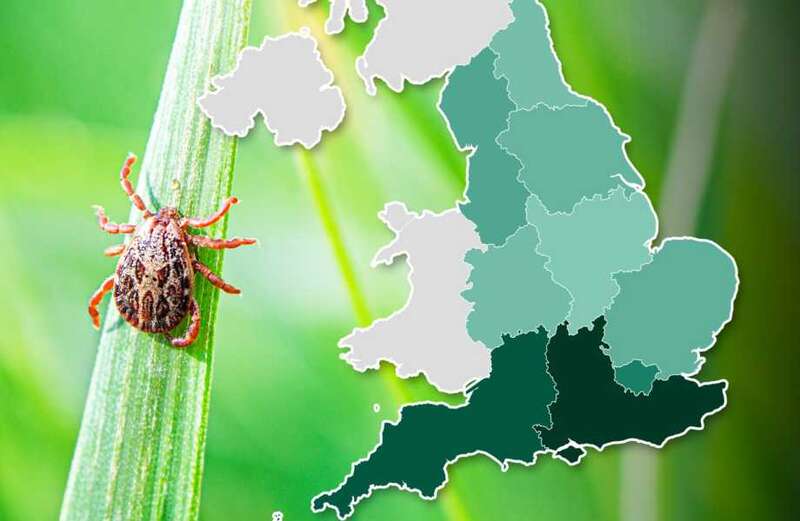SUMMER is the peak period of exposure to ticks in the UK.
The tiny, spider-like creatures are usually found in grassy areas, gardens and woodland - and in some cases, a bite from them can result in debilitating Lyme disease.

This is a bacterial infection that is passed on to humans from infected ticks.
Cases of Lyme disease have risen in recent years, with some English regions seeing higher numbers than others.
Dorset residents in particular have been warned to take extra precautions this summer.
 Spectacular New Year fireworks light up London sky as huge crowds celebrate across UK for first time in three years
Spectacular New Year fireworks light up London sky as huge crowds celebrate across UK for first time in three years
New figures released by the UK Health Security Agency (UKHSA) suggest more Lyme disease cases have been reported in the first three months of 2023 compared to the previous year.
While there were 139 confirmed cases for that time period in 2022, 152 were reported in 2023.
UKHSA noted that the total number of acute Lyme disease cases reported in the first quarter of 2023 (83) compared to to the same period in 2022 (89).
But it said: "The number of laboratory-confirmed cases presented in this report are likely an underestimate of the true burden of acute Lyme disease."
The agency also ran though which regions in England had reported the most acute cases of the infection in 2022 and so far this year.
The South East saw the highest number both last year and in the first three months of 2023, reaching 251 and 23 respectively.
The South West followed closely, with 213 people coming down with an acute form of the disease in 2022 and 16 more cases being reported so far this year.
London ranked third in terms of the number of cases, with 160 reported in the whole of 2022.
But it came in slightly higher than the South West this year, with 18 confirmed cases reported between January and March in 2023.
"Only one of the acute cases in the first quarter of 2023 reported foreign travel, specifically to eastern Europe," the government said.
 Robbie Williams poised to launch his own brand of energy drinks to rival Prime
Robbie Williams poised to launch his own brand of energy drinks to rival Prime
If you get bitten by a tick, it doesn't necessarily mean you'll get Lyme disease.
It's estimated that between 2.5 and five per cent of ticks in England and Wales are infected, though government guidance notes that this range can fluctuate in different areas and over time.
If you have been infected, most people develop a distinctive red rash in the shape of a circle with a ring around it between three and 30 days after they were bitten.
It may resemble a bullseye on a dartboard, and can either be flat or slightly raised, and look pink, red, or purple when it appears on white skin.
It can be harder to see the rash on brown and black skin and it may look like a bruise, the NHS notes.
Some people also get flu-like symptoms a few days or weeks after they were bitten by an infected tick, such as:
- a high temperature, or feeling hot and shivery
- headache
- muscle and joint pain
- tiredness and loss of energy
And it's possible to develop more severe symptoms months or years down the line, which is more likely if treatment is delayed.
These more severe symptoms may include:
- pain and swelling in joints
- nerve problems – such as pain or numbness
- heart problems
- trouble with memory or concentration
How can I remove a tick safely?
To remove a tick safely:
- Use fine-tipped tweezers or a tick-removal tool. You can buy these from some pharmacies, vets and pet shops.
- Grasp the tick as close to the skin as possible.
- Slowly pull upwards, taking care not to squeeze or crush the tick. Dispose of it when you have removed it.
- Clean the bite with antiseptic or soap and water.
The chance of getting ill is low. You do not need to do anything else unless you notice a rash or become unwell.
If either of these happen, make sure to see a GP so you can get treatment as soon a possible.
How can I avoid tick bites?
There are a few things you can do to lessen your likelihood of tick bites.
Firstly, try and cover as much of your skin as possible while walking outdoors and tuck your trousers into your socks.
You should also be using insect repellent containing DEET on your clothes and skin, and wearing light coloured clothing so you can spot a tick easily.
Also stick to paths where possible when you're out walking.



































